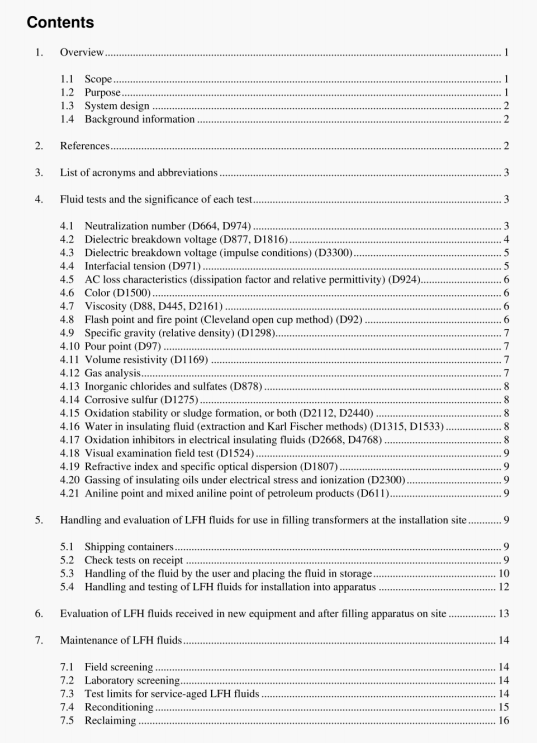IEEE Std C57.121:1998 pdf free download.IEEE Guide for Acceptance and Maintenance of Less Flammable Hydrocarbon Fluid in Transformers.
4.3 Dielectric breakdown voltage (impulse conditions) (D3300)
Insulating fluids used in high-voltage apparatus are subjected to transient voltage stresses ansing from such causes as nearby lightning strikes and high-voltage switching operations as well as being subjected to steady-state voltage stresses associated with continuous operation of the apparatus at commercial power frequencies. The ability of the insulating fluid to withstand such transient voltage stresses has become increasingly important to determine, as the use of oil-filled apparatus has been extended to operating voltages of 345 kV and higher (extra-high and ultra-high voltage). Breakdown voltage is of primaly importance to the designers of such equipment. Its importance to other types of apparatus has yet to he determined.
Transient voltages caused by lightning and switching surge phenomena may he either negative or positive in polarity. Although polarity of the voltage wave has little or no etTect on the breakdown strength of an oil in uniform fields, polarity does have a marked effect on the breakdown voltage of an oil in nonuniform electric fields.
The transient voltages already referred to may also vary over a wide range in both the time to reach crest value and the time to decay to half crest or to zero magnitude. The IEEE standard impulse test specifies a 1.2-by-50-ps negative polarity wave. The standard wave shape for switching surge tests on transformers is to zero.
The purchaser of an impulse generator may warn to specify the necessary flexibility to make possible switching surge tcsts, Consideration may he given to other electrode configurations such as VDE clectnslcs. which are similar o those used in Method Dl816. since it may be desirable to obtain the ratio between power frequency and impulse breakdown under similar conditions.
Care must be takeii when filling the test cell with LFH fluids to guard against trapping air bubbles, which may result in misleading, low breakdown voltages.
4.4 Intertacial tension (D971)
This method covers the measurement, under equilibrium conditions, of the interfacial tension of insulating fluids against water. The intcrfacial tension between electrical insulating fluids and water is a measure of the molecular attractive fbi-ce between their unlike molecules at the interface. It is expressed in dyne/cm (mN/m). This test provides a means of detecting soluble polar contaminants and pftNiucts of deterioration. Soluble-contamination or fluid-deterioration products generally decrease the interfacial tension value.
IEEE Std C57.121:1998 pdf free download
